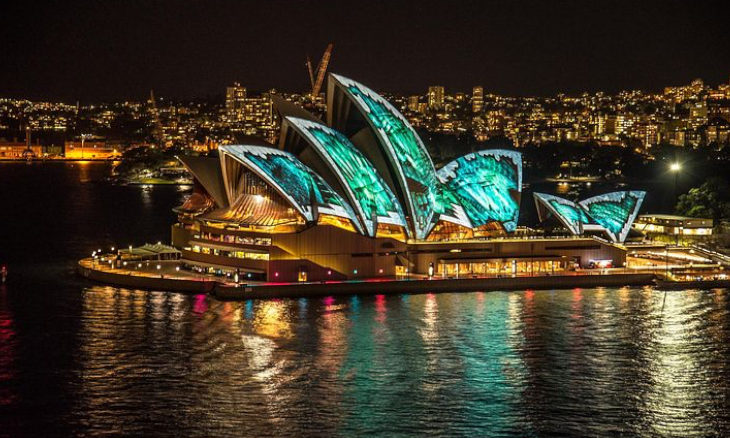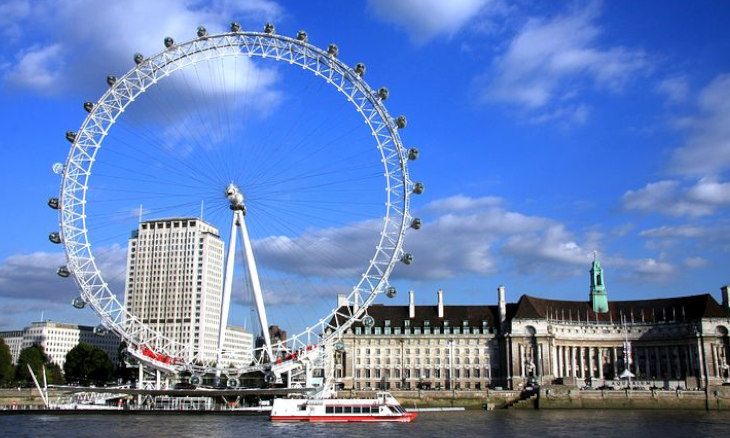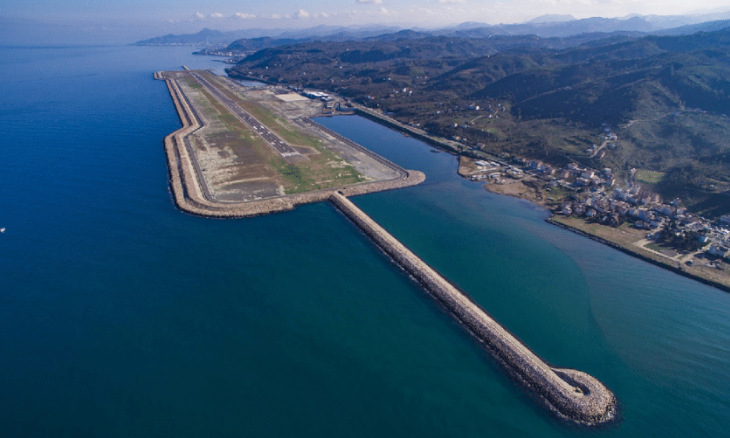Political Islam’s quest for symbols in Turkey
Ever since it came to power in 2002, President Erdoğan's Justice and Development Party (AKP) has sought symbols that would capture its very own ideology. Today as the AKP government is suffocating politically, it gave up on its quest for a symbol to present to the world.
Today, Turkey abounds in all kinds of distorted symbols, figures and ideological currents. These ideological currents are based on two sources. One of them is history, harking back to the Ottoman and Seljuk empires; the other are regional symbols, referred to as the realm of the yerli ve milli, or “local and national.” One also may add oddities such as tacky dinosaurs and dolphin-shaped phone boots.
Traditional symbols have resurfaced. Those can seen in films, television series, sculptures, names given to buildings and bridges, architectural forms associated with the Ottoman and Seljuk eras, commemoration days that are established out of the blue and so on. This cultural environment has nourished the social transformation.
One may however question their level of success. The rhetoric that Turkey is a “universal nation” is crumbling. Its neo-Ottoman imperialist foreign policy no longer persuades anyone. And neither do the symbols that accompany it. It is no easy feat to create a symbol that becomes universal, identified with a country or a city, and a timeless classic. It takes time.
Here are three successful symbol structures/buildings from the beginning, middle and end of the 20th century.
The Eiffel Tower is the universal symbol of not only Paris but of France. It was built in 1889 as the entrance gate of a world fair organized to commemorate the 100th anniversary of the French Revolution. It was supposed to be dismantled after 20 years and caused uproar as it was erected. Yet, later, upon worldwide interest, it remained a part of the city. Today, 6 million people visit the Eiffel Tower every year.

The Sydney Opera Building is amongst the first symbols that come to mind when Australia is brought up. When the architect Joern Utzon designed it in 1957, it was again met with strong objections. While its architectural design was said to be inspired from bird wings, clouds and mussels, it was derided, as it resembled turtles on top of each other. Today, it is a national landmark.

In London, the 135-meter tall observation wheel was built in 1999 on the South Bank of the River Thames, the “London Eye.” It was meant to celebrate the millennium and is the most recent of the city’s countless symbols. Again, the structure raised many objections, as it was claimed that it did not fit in with the city’s historic flavor. Yet 3 million people visit the new London eye, from which one can view the city at 360 degrees.
As for Turkey, whether it is the republic or the new regime, it failed to achieve similar successes. Turkey’s rulers failed to give the modern world a symbol. Though the republic itself was designed from scratch, it was unable to bequeath a symbolic legacy.
The AKP’s search for symbols
Ever since it came to power in 2002, the Justice and Development Party (AKP) has sought symbols that would capture its very own ideology and which it could present to the world. In accordance with its conservatism and bid to reshape society, its reference was the past, namely Turkey’s ties to the Ottomans, and to values considered “local and national.”
For instance, it erected the colossal Çamlıca Mosque in one of the city’s most visible spots. Yet aside from stating “We are Muslim country,” the structure doesn’t convey much else to those passing through the Bosphorus. Its 34-meter dome span refers to the vehicle registration plate number of Istanbul, and the 107.1 height of its minarets were a reference to the Battle of Manzikert which took place in 1071. This doesn’t bring anything new.
In those shuttle buses carrying tourists from Istanbul Airport to the city center, the Çamlıca Mosque is recommended as a “must see” location. But why would anyone visit a 2019 copycat mosque, when there are original versions?
No symbol will come out of mosques and revived traditional forms. None bring anything new to the contemporary world. But what about those contemporary structures such as airports and bridges?
Let us examine the 1915 Çanakkale Bridge. With its main span of 2023 meters, this bridge will be the world’s longest span suspension bridge. It will also be the world’s tallest suspension bridge with its 333-meter towers.
The main span of 2023 meters is not coincidental. It is a reference to Turkey’s 2023 targets, the ones we are tired of hearing about and as the date looms, its credibility diminishes. This date and the fact that it is the biggest bridge do not suffice to make it a symbol.
And what ever happened to Istanbul Airport, which was lauded as a monument of victory? As I have written previously, its size is not merely functional. Just like a monument, the airport stands as an impractical building complex.
The AKP government, as it is suffocating politically, is only using its symbols domestically. It gave up on its quest for a symbol to present to the world. Nowadays, whatever is “national and local” is desirable. But the politics of symbols may induce unexpected consequences.

The Artvin-Rize Airport, which raised questions over its necessity given the Trabzon Airport is nearby, made it to the news for its control tower. Rize is famous for its tea. And the tea being “local and national,” the control tower was built in the shape of a tea glass.
Unless we free ourselves from this “local and national” trap, we will be dealing with this cheap and easy rural symbolism a lot. When I say “rural esthetics,” please don't see it as a condescending attitude.
“Rural” refers to what lays beyond the capital or any large city. Yet, as illustrated by the tulip-shaped air traffic control tower at Istanbul Airport, the whole country has become rural. Despite this, one doesn’t see actual tulips.
The Ottomans brought the tulip in the 15th century before they made their way to Europe and the Netherlands, where there too, they became a national symbol. Today, the tulip is one of the main symbols associated with the Netherlands. When one lands at Amsterdam Schiphol Airport, colorful tulip fields dominate the landscape. Despite that, it never came to anyone’s mind to build an airport tower in the shape of a tulip. There was no need for it. Today, when we see tulips in Istanbul suffocated in green patches beside highways, we feel sorry for them.
Failure at symbolic level
Throughout the AKP’s reign, the rhetoric according to which political Islam embraces society as a whole has been proven wrong several times. What we see is a vengeful, increasingly authoritarian regime that attempts to establish its own hegemony. Yet political Islam’s breakaway from the hegemony of modernity only applies to the cultural sphere. Beyond that, the country’s rulers are in absolute continuity with the prevailing neoliberalism and are further deepening social inequality. Cultural and symbolic transformations serve to cover the continuity of the political and economic system.
Today, the government does not know what to tell the world, and more importantly, to the country. It suffers from that. The new regime has reinterpreted every contemporary value based on democracy, secularism and the rule of law. A quasi-autocratic state came out of it. As the government is politically troubled, an unending war dominates political life.
There can be war symbols, they can serve to make someone feel powerful, victorious and mighty. But war themselves do not have aesthetics. In the context of survival war, there is no place for anything beautiful. The never-ending war-like scenario in Turkey and its authoritarian environment suppressing society, freedom of thought, culture and art constitute the greatest obstacles to the formation of new and modern symbols. Unless we give up on this narrow survival rhetoric, we will be unable to generate modern, universal symbols.

